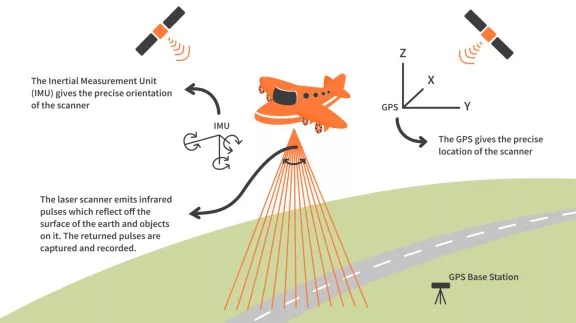Wireless Power Transmission is the transmission of electrical energy from a power source to an electrical load without wires as a physical link. It is usually controlled by two Integrated Circuits (ICs): one transmits power (transmitter) and the other receives the transmitted power (receiver). Magnetic induction between planar receiver and transmitter coils facilitate wireless power transmission. The receiver coil is positioned over the transmitter coil and magnetic coupling occurs when the transmitter coil is driven. The receiver coil takes power from the electromagnetic field and converts it into electrical power. The secondary voltage is then rectified and transmitted wirelessly to the load.

Wireless power systems generally consist of a "transmitter" device and one or more "receiver" devices. The transmitter is connected to a power source, which converts the power to an oscillating electromagnetic field. At the transmitter, the input power is converted to an oscillating electromagnetic field by an antenna device. The type of electromagnetic energy depends on the type of antenna; a coil of wire which generates a magnetic field, a metal plate which generates an electric field, an antenna which radiates radio waves, or a laser which generates light, among others. Resonators with the same frequency in the source and receiver coils ensure that the two systems couple magnetically, allowing for higher energy transfer efficiency. This means that the power transfer happens without the need for metal or other material connection, as long as the transmitter and the receiving coil resonate at the same frequency. The receiver(s) retrieve the power and convert it back to DC or AC electric current to be used by an electrical load. An antenna or coupling device at the receiver converts the electromagnetic energy to electric current. The electromagnetic field that radiates from an antenna takes on characteristics that depend on the distance from the radiating element. Two areas of wireless power techniques can be distinguished: near field area and far-field area.
Wireless Power Techniques
In near field wireless power transfer, power is transmitted over short distances by magnetic fields through inductive coupling (electromagnetic induction) between coils of wire, or by electric fields through capacitive coupling (electrostatic induction) between metal electrodes. The first stage is basically an inverter, which converts DC current into AC current at the appropriate frequency. After the inverter is an impedance matching network which adjusts the impedance seen by the transmitting coil according to the load. The next stage is composed of the transmitting and receiving coils, coupling to generate the magnetic field and intercept it. A second impedance matching network ensures that the load sees the appropriate impedance. Finally, a rectifier converts the alternating current to a stable DC current through a voltage regulator.

Inductive coupling is the most widely used wireless technology; its applications include charging handheld devices like phones and smart watches, radio-frequency identification tags, induction cooking, electric vehicles, and continuous wireless power transfer in implanted medical devices like artificial cardiac pacemakers.
In far-field wireless power transfer, power is transferred by beams of electromagnetic radiation (power beaming), such as microwaves or laser beams. The energy is radiative, which means it leaves the antenna whether or not there is a receiver to absorb it. The portion of energy that does not strike the receiving antenna is dissipated and lost to the system. Hence, these techniques can transport energy through longer distances but must be efficient enough for a considerable amount of energy to be aimed at the receiver. This is a developing area of research in power transmission and is expected to pave the way to providing power to every corner of the world. Other proposed applications of far-field techniques are solar power satellites, and wireless powered drone aircraft. OnlineComponents.com, one of our Friends of CircuitBread, offer a diverse selection of wireless charging modules that are perfect for diving into this exciting field. To further explore the intricacies of wireless charging, check out their insightful blog on The Engineering Behind Wireless Charging and discover how this technology is shaping the future.
Wireless power transmission can eliminate the use of materials which are prone to damage and corrosion such as wires and batteries, thus increasing the mobility, convenience, and safety of an electronic device for all users. WPT technology is especially useful in driving electrical devices where interconnecting wires are inconvenient, hazardous, or are physically not possible. Eliminating wires makes way for compact and watertight devices, thus optimizing on safety, and variety of use such as in deep-sea applications. An important safety issue associated with wireless power systems is limiting the exposure of people and other living beings to potentially dangerous electromagnetic fields. Despite potential electromagnetic safety or cybersecurity risks, WPT technology is convenient, flexible, and capable of fully automated operation. It is expected to continue to develop for more groundbreaking applications while we also continue to understand its potential vulnerabilities (especially for high power WPT) as well as the corresponding methodologies for response and recovery.














